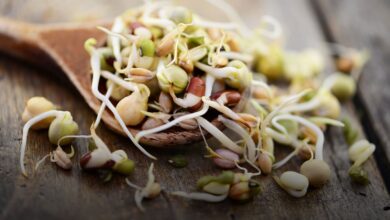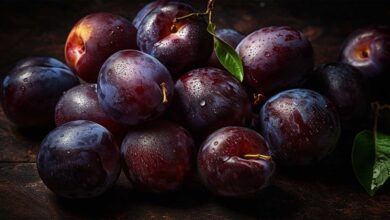Citrulline | Endurance | Muscle recovery

Citrulline is an amino acid that has long been in the shadow of its more famous counterparts such as leucine and arginine. However, recent research has highlighted its potential role in improving endurance and reducing muscle fatigue. This article reviews the biochemical properties of citrulline, its physiological effects, and its practical applications, with an emphasis on current scientific evidence.
Briefly
- Citrulline is a non-essential amino acid that has significant effects on cardiovascular health.
- Promotes nitric oxide production, leading to improved circulation and lower blood pressure.
- Citrulline is beneficial for athletes because it improves endurance and aids muscle recovery.
- Citrulline plays a crucial role in the urea cycle, helping to remove ammonia, a metabolic waste product.
- The recommended dose to improve athletic performance is 6 to 8 grams approximately one hour before exercise.
Buy Citrulline at the best prices
Amazon Affiliate Link. Prices mentioned in this article are indicative and subject to change.
identification
Citrulline is a non-protein amino acid, which means it is not involved in building proteins like other amino acids such as leucine or valine. Its chemical composition is C6H13N3O3. It was initially isolated from watermelon, hence its name, derived from the Latin word for watermelon, “citrullus.”
Metabolic and biochemical role
Citrulline plays a central role in the urea cycle, a metabolic pathway that allows ammonia to be detoxified and converted to urea in the liver. Ammonia is a toxic product of protein metabolism, and its conversion to urea, a much less harmful substance, is critical for maintaining homeostasis in the body.
This amino acid is also a precursor to arginine, another amino acid that plays a key role in the synthesis of nitric oxide, a vasodilator. This process is essential for regulating blood pressure and cardiovascular health.
Why is citrulline so special?
What makes citrulline particularly interesting is its ability to increase levels of another amino acid, arginine, more effectively than arginine supplements themselves. This has major implications for cardiovascular health, athletic performance, and even mental health.
You may be wondering why not just consume arginine? Well, arginine is metabolized very quickly, while citrulline is converted to arginine more stably, providing longer-lasting benefits.
Citrulline vs. Citrulline Malate: What's the Difference?
Pure citrulline is an amino acid that comes in its basic form. On the other hand, citrulline malate is a compound that combines citrulline and malic acid. Malic acid is an organic compound involved in the Krebs cycle, a central metabolic pathway for cellular energy production.
This means you benefit not only from the vasodilatory effects of citrulline, but also from a potential increase in energy production during exercise (hence its popularity in sports supplements).
Benefits and effects
Improve endurance
Citrulline has a significant impact on endurance by improving the vascular system. It facilitates the dilation of blood vessels, allowing better flow of oxygen and nutrients to the muscles used during exercise.
This mechanism is mainly due to its conversion to arginine, another amino acid, which is a direct precursor to nitric oxide. This gas has the ability to relax the smooth muscles surrounding blood vessels, causing them to dilate and allowing for better blood circulation.
Help with muscle recovery
Citrulline doesn't just improve performance during exercise; It also plays a crucial role in the recovery phase. After physical exertion, muscles undergo microtrauma that requires repair to allow muscle growth. Citrulline facilitates this repair by improving circulation, allowing nutrients and oxygen to be delivered to damaged muscles more quickly.
Faster recovery means you can get back to your workout faster, which can be beneficial for professional athletes and fitness enthusiasts. In addition, effective recovery reduces the risk of injury and fatigue, allowing you to maintain a high level of performance over a longer period of time.
Anabolic amino acid
Yes, you read correctly! Citrulline promotes muscle protein synthesis by activating the mTOR (mammalian target of rapamycin) pathway. This pathway is essential for regulating cell growth and protein synthesis(1). By activating this pathway, citrulline accelerates muscle repair and recovery.
Lowering blood pressure
Nitric oxide doesn't just improve circulation; It also plays a role in regulating blood pressure. Numerous studies(2) Show that citrulline supplements can reduce blood pressure in people with high blood pressure. This is especially important for those looking to improve cardiovascular health naturally.
Dosage and consumption
Now that we've explored the many facets of citrulline, the question is: How can you get the most out of it?
Studies show that taking 6 to 8 grams of citrulline or citrulline malate about an hour before exercise can be effective in improving performance.(3). It is also possible to divide this dose into several doses throughout the day.
Natural sources
If the idea of taking citrulline supplements doesn't appeal to you, know that this amino acid is also found in some foods. So, where can you find these little wonders of nature? You will be surprised to know that citrulline is more common than you think.
Foods rich in citrulline
Watermelon is often the star of the show when it comes to citrulline. This delicious and refreshing fruit is an incredibly rich source of this amino acid. But it's not the only food that can increase your citrulline levels. Here is a more comprehensive list:
- Watermelon: The classic big one, especially the white part close to the skin;
- Pumpkin: Another pumpkin that gets the job done;
- Cucumber: Ideal for salads and rich in citrulline.
- Watermelon: a sweet and refreshing option;
- Nuts: especially almonds and peanuts;
- Oily fish: such as salmon and mackerel.
Other natural sources
Citrulline can also be found in some meat and dairy products, but in much smaller amounts. For example, some hard cheeses contain traces of citrulline. If you're looking to increase your intake, fruits and vegetables are still your best choice.
What to remember
Citrulline's ability to improve blood flow has significant implications for cardiovascular health. It can help reduce blood pressure and improve tissue oxygenation, which is beneficial not only for athletes looking to perform, but also for anyone concerned about cardiovascular health.
On the same topic

(Tags for translation) Definition
Citrulline | Endurance | Muscle recovery


